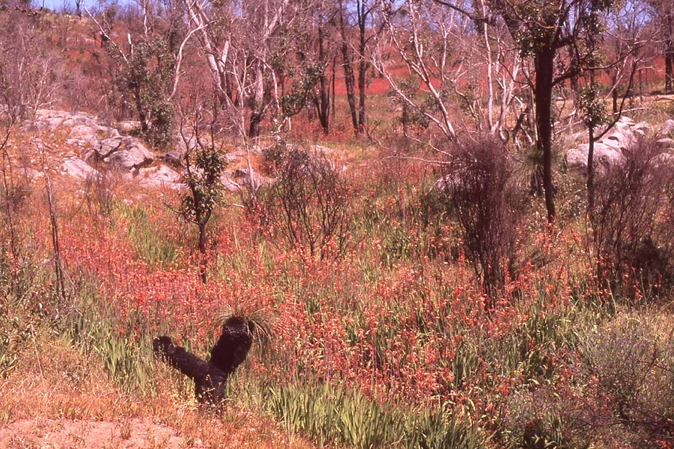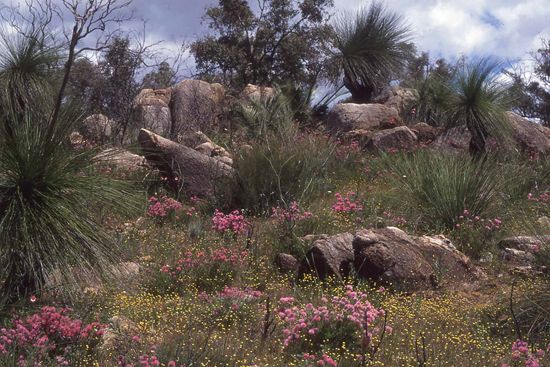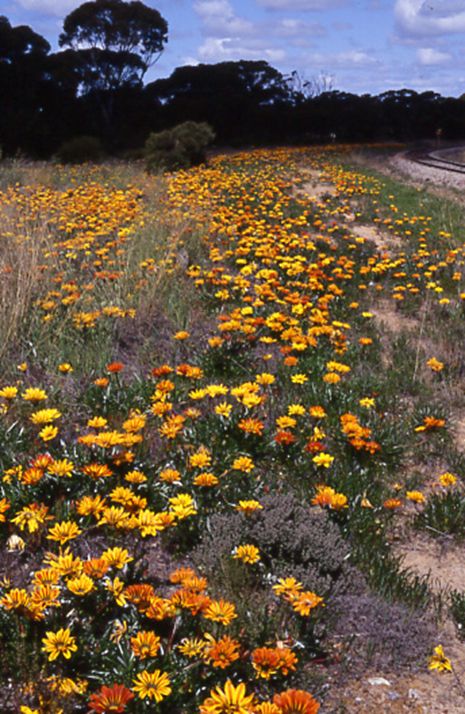Main Club, 1st October 2021
The speaker at our October meeting was Penny Hussey AM, a past president and long-time member of the WA Naturalists’ Club. Penny is very well qualified to speak on this subject as she has worked on roadside vegetation and Land for Wildlife whilst in CALM/DEC; is a co-author of Western Weeds, a guide to the weeds of Western Australia and is very active with the Wildflower Society.

Penny started her talk with a colourful photograph of the Helena Valley after a recent fire, the wonderful colour was from the weed Watsonia bulbillifera. This pest plant was introduced from South Africa as a garden ornamental by the early botanist Georgiana Molloy.
Watsonia – Image by Penny Hussey
Weeds are often described as the wrong plant growing in the wrong place, a decision made by humans, not plants. They can be local natives, e.g. Geraldton wax (Chamelaucium uncinatum) growing in Bold Park; from eastern Australia, e.g. the Queensland silver wattle (Acacia podalyriifolia); or from overseas, e.g. soursob (Oxalis pre-caprae) and arum lily (Zantedeschia aethiopica) both declared plants from South Africa. Many are horticultural escapes and are often seen as brightening up the bush. Indeed, the Acclimatization Society in WA in the 1890s deliberately seeded local bush areas with the pink gladiolus (Gladiolus caryophyllaceus) to make them more colourful. These perceptions have changed, and weeds are now recognised as extremely important in local bushland areas and reserves. These can be woody weeds, such as acacias and eucalypts from eastern states, figs, olives and pines, climbers such as Bridal Creeper (Asparagus asparagoides) or dolichos pea (Dipogon lignosus), herbaceous plants such as Capeweed (Arctotheca calendula), grasses such as tambookie (Hyparrhenia hirta), and geophytes such as watsonias and gladiolus.

Should environmental weeds be removed by government departments? Penny gave two examples where this has been done. The first was the removal of the spiny plant African Boxthorn (Lycium ferocissimum) from Bald Island near Albany. This island is an important seal breeding site and as seal pups were being injured by plants growing along the tidal line. The second example was Erica baccans which had been grown as a garden plant in the old forestry townsite at Shannon.

How can Friends Groups assist with weed removal in local bushland areas? Penny emphasised that the first step was to ensure that the aims for such activity needed to be carefully considered so that everyone agrees with what is proposed. Then there are a number of important steps:
- Firstly, it is essential to recognise the plants so weeds can be distinguished from native species. This can be by using books or asking the local environmental officers.
- Secondly, keep records of the weeds by taking the whole plant and scanning it with a computer scanner.
- Thirdly, decide what is to be done. It is best to tackle the ecosystem-altering weeds first.
- Lastly, minimise disturbance because many weeds are disturbance opportunists.
Gazania – Image by Penny Hussey
Penny’s talk provided food for thought. It illustrated how ideas have changed over time, especially in relation to how we value our native vegetation.
Elaine Davison

